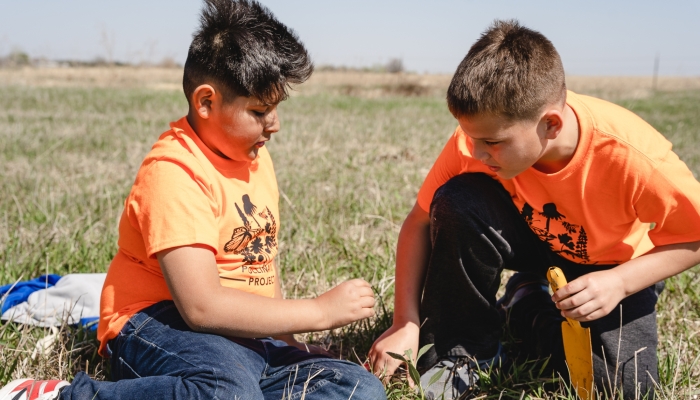Buzzing with Potential
Pollinator Day Event Held in York
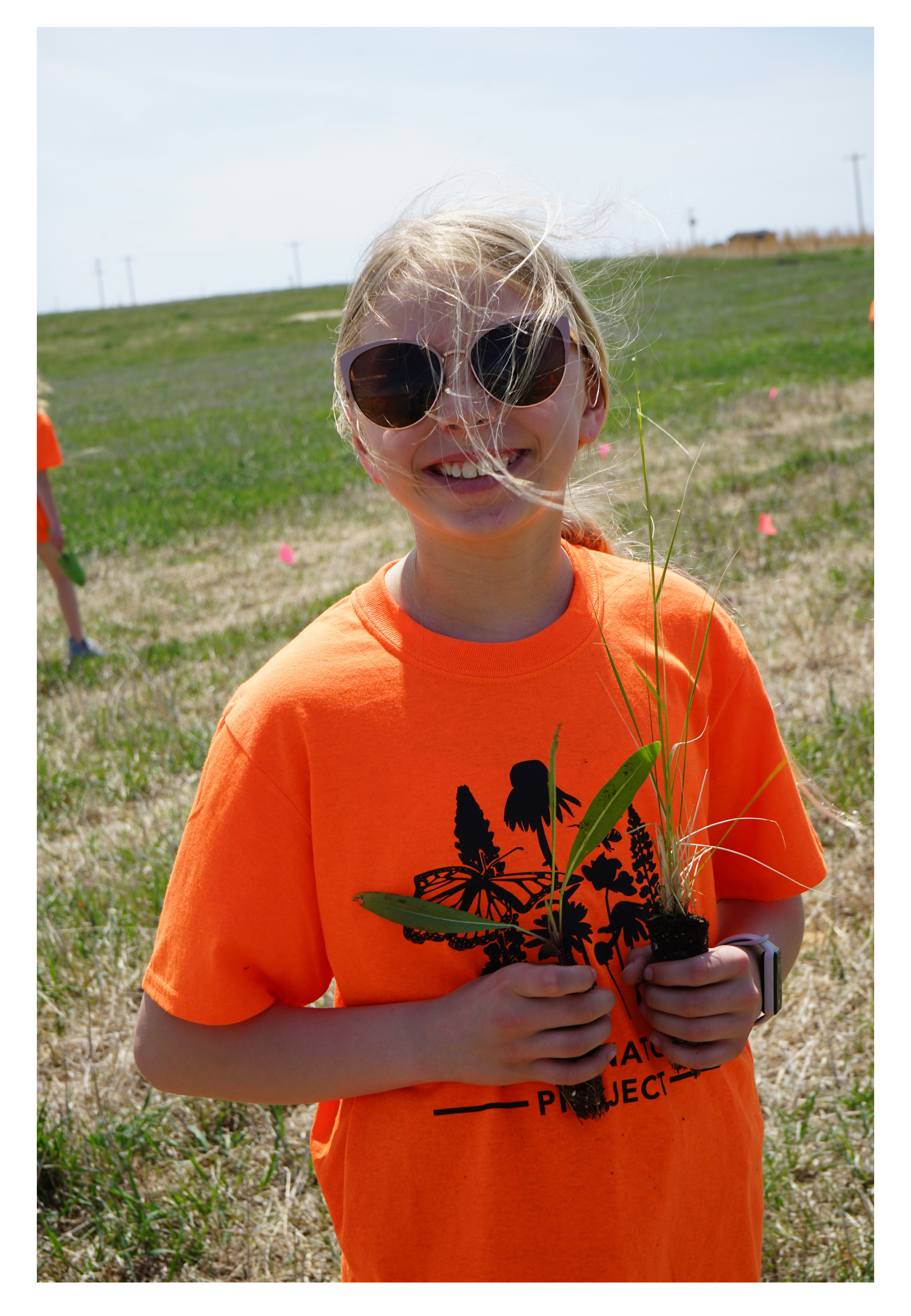 The calls of meadowlarks and the excited voices of children fill the air on a warm spring day as youngsters in vibrant orange tee shirts swarm over the hillside on the outskirts of York. Pails of seeds swing precariously from small fists. “Don’t run!” the teachers and volunteers call to no avail, as the fourth graders fly across the field that has been prepared for the class Pollinator Day activity. Badger holes dot the landscape, presenting an injury hazard as well as a source of fascination for the students, who stop to peek in and see if anyone is home.
The calls of meadowlarks and the excited voices of children fill the air on a warm spring day as youngsters in vibrant orange tee shirts swarm over the hillside on the outskirts of York. Pails of seeds swing precariously from small fists. “Don’t run!” the teachers and volunteers call to no avail, as the fourth graders fly across the field that has been prepared for the class Pollinator Day activity. Badger holes dot the landscape, presenting an injury hazard as well as a source of fascination for the students, who stop to peek in and see if anyone is home.
The promise of much needed rain in the forecast makes it the perfect conditions for the day’s objective: planting two additional acres of pollinator habitat.
Prior to planting, the students spent time learning about native Nebraska plants such as big and little bluestem grasses, several milkweed varieties, purple coneflower, and blanket flower. Their buckets carry a mixture of seeds of 40-50 plant varieties.
As the adults call out instructions, the children align single file on the edge of the field, buzzing with excitement. Then carefully, soberly, they begin to scatter their seeds low to the ground, walking slowly westward, the wind in their faces. For the first time all day, they are quiet, fully absorbed in their task of broadcasting seed, making sure that every inch of the parched soil is covered.
This activity is what they have been preparing for all morning. The main event. The moment they go from being kids to being conservationists. With a gentle flick of the wrist, they have been empowered in this momentous struggle to protect pollinators from further decline and thus improve the future. They’ve heard all about the role of pollinators, focusing on why they’re important and how they can benefit them by protecting their habitat. Now it’s their turn to help.
The students aren’t saving the world, but they approach this planting effort enthusiastically, with the knowledge that they are taking the first step toward a brighter tomorrow.
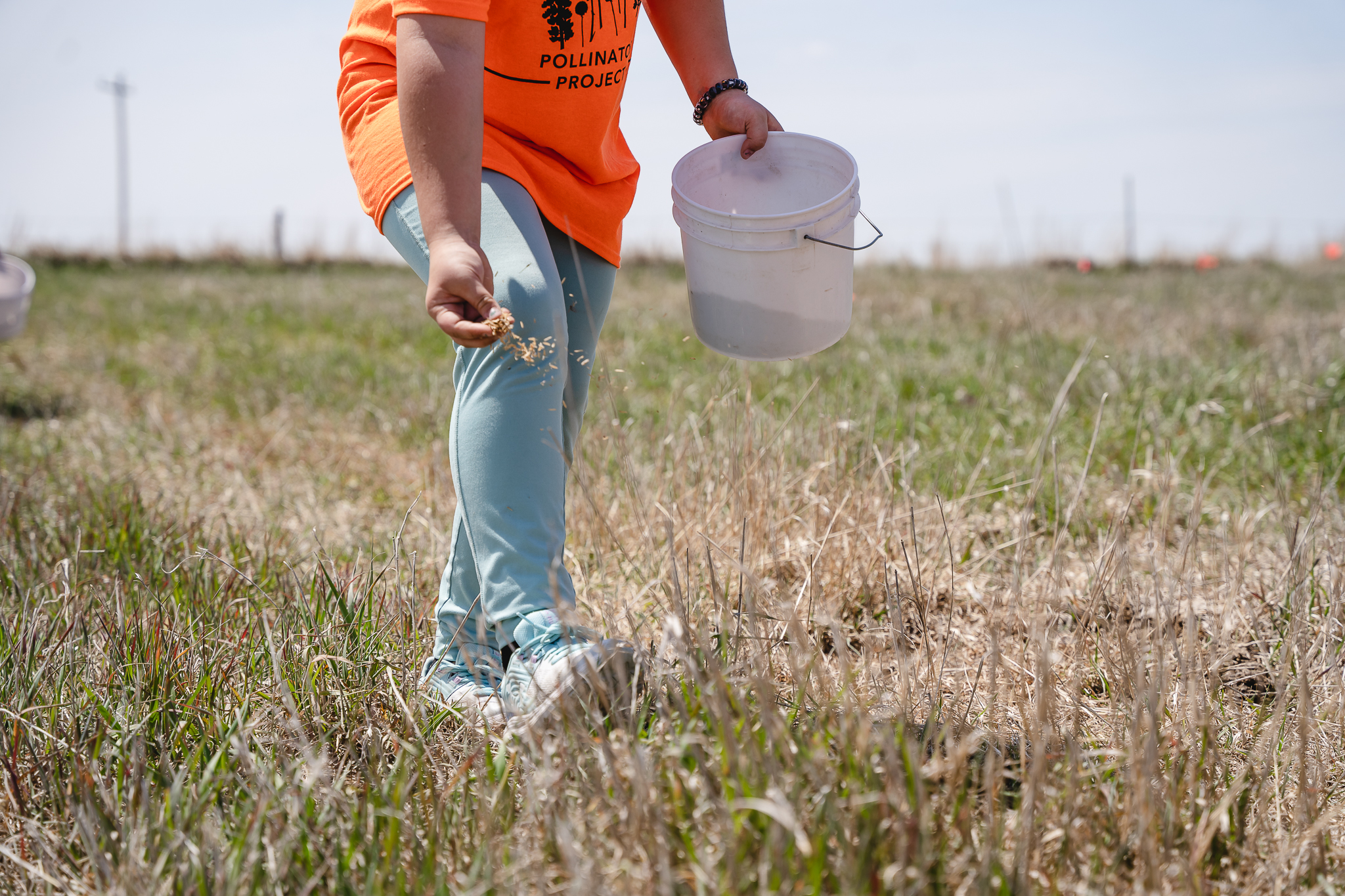
Once their buckets are empty, the children dash back across the field to pick up more mature plants that have been grown in advance to provide a jumpstart to the pollinator patch. Many of the seeds the students are spreading are for plants that grow extensive roots prior to aboveground proliferation. The handplants will allow for faster results in the pollinator habitat. The kids grab two plants apiece, plus a brightly colored trowel and receive instructions about how to place the roots into the pre-drilled holes spread at regular intervals across the field and marked with small orange flags. They dash off once again at top speed, eager for the new task.
A Pollinator Day event has been hosted annually by Nebraska Pheasants Forever Corn Country Chapter for the past eight consecutive years in York. Each year, a bit more pollinator habitat is planted, expanding the pollinator patch on the northeast side of the city wellfield. This year, more than 110 students from local public and private schools participated in the hands-on learning opportunity.
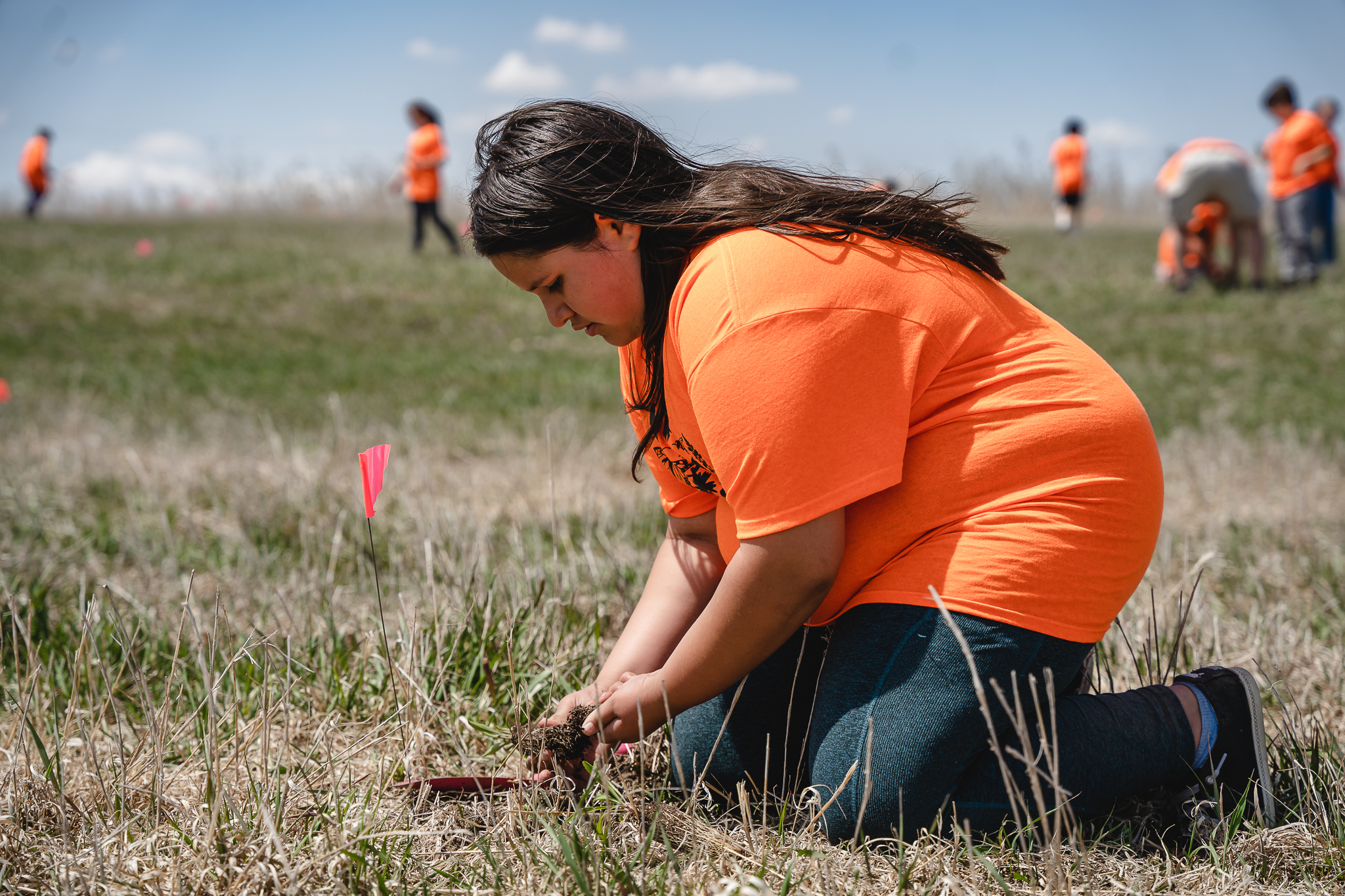
Through presentations from Pheasants Forever, Upper Big Blue Natural Resources District, and University of Nebraska Lincoln College of Agricultural Sciences and Natural Resources, students learned about pollinator habitat requirements, what pollinators do, and why they are vital to a flourishing ecosystem. From the humble honeybee to the celebrated Monarch butterfly, students learned that pollinators are an essential component of agriculture in Nebraska. A favorite part of the event for many was seeing the activity inside a beehive and learning about the hierarchy and daily habits of these complex social creatures.
Students also spent time learning about native Nebraska plants that make great pollinator and pheasant habitat. Then they put their newly acquired knowledge to good use by planting a variety of these and other plants near York’s wellfield. The plot is part of the Project GROW demonstration site that is operated in partnership with the City of York and the Upper Big Blue Natural Resources District. The purpose of Project GROW is to improve the soil above the city’s wellfield as a means of protecting the water that residents consume.
In addition to their planting efforts, students also enjoyed exploring the great outdoors, from chasing garter snakes to jumping over a dry creek bed. At the end of the activity, students were given their own packets of pollinator mix to plant at home, along with a stick of honey to enjoy—a sweet reminder of the value of their labors.
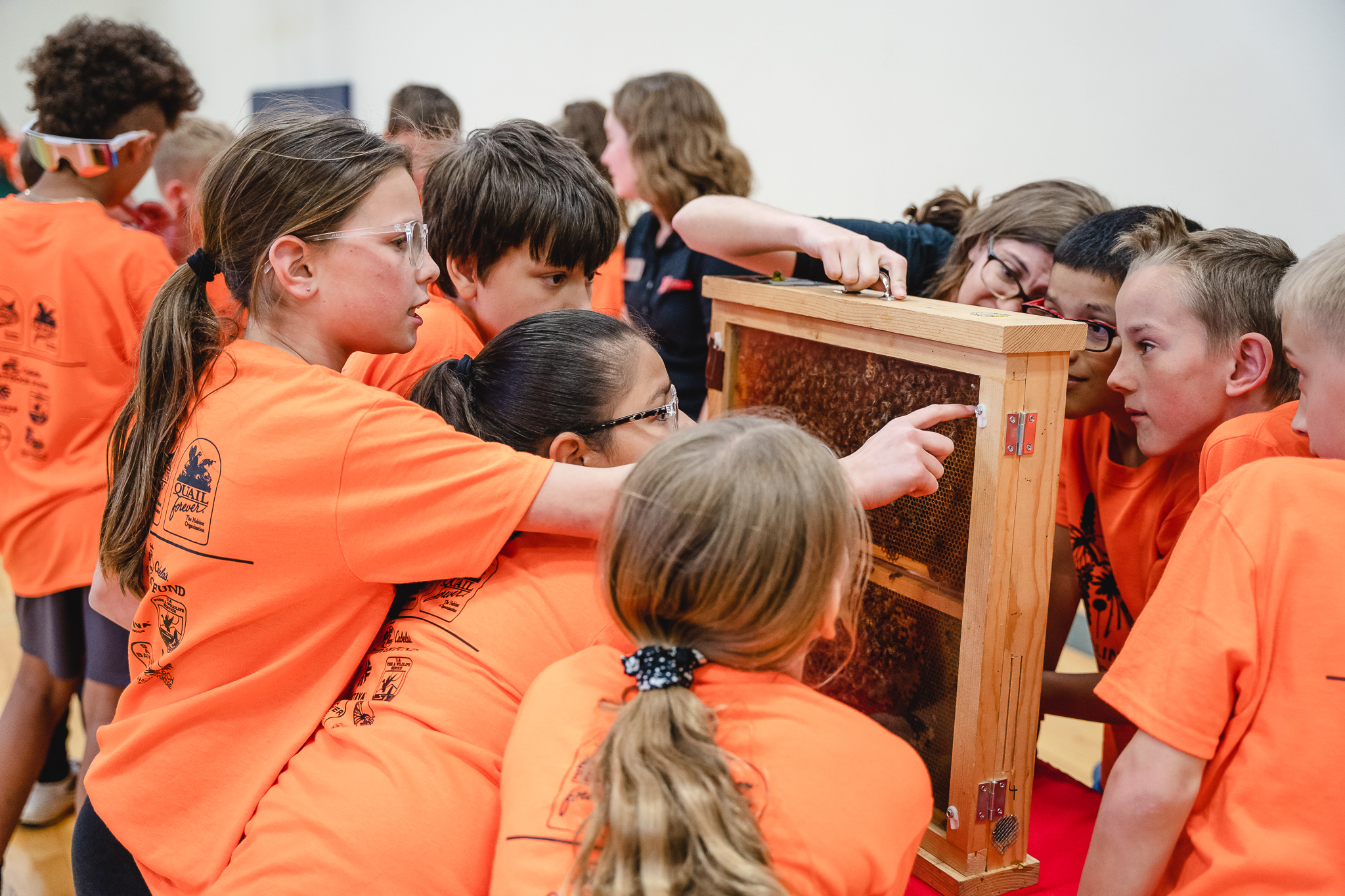
To complete the educational experience, students will return this autumn to see how their plants have grown. Led by researchers from the University of Nebraska’s Department of Entomology, students will have the opportunity to tag monarch butterflies as they migrate south for the winter. As monarchs and other pollinator populations continue to decline due to loss of habitat and food sources, pesticide overuse, and disease, activities that engage young people in conservation activities are ever more urgent.
Funding for this event through Pheasants Forever’s Pollinator Habitat Outreach Program with funding support from Corteva, Bayer, USFWS, Bass Pro Shop’s and Cabela’s Outdoor Fund, Monarch Joint Venture, USFS and the organization’s local volunteer chapters. Along with high diversity pollinator seed provided by Bee & Butterfly Habitat Fund’s program NextGen.

